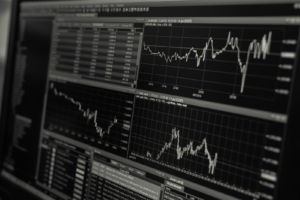 There is a worldwide growth in markets like Forex, cryptocurrency, etc. with more and more traders and investors entering the market in order to make maximum profit with the least amount of risk, and they want to speculate the changes in the market without actually owning any of the instruments, this is where CFDs comes to place.
There is a worldwide growth in markets like Forex, cryptocurrency, etc. with more and more traders and investors entering the market in order to make maximum profit with the least amount of risk, and they want to speculate the changes in the market without actually owning any of the instruments, this is where CFDs comes to place.
What Are CFDs?
A Contract For Difference (CFD) can be defined as an agreement between a buyer and a seller in which the purchaser agrees to pay the seller the difference between the asset’s present price and its value at the time of the contract.
CFDs enable traders and investors to profit from market volatility without having to own the underlying assets. The underlying value of an asset is ignored when calculating the value of a CFD contract; only the price difference between trade entry and exit is taken into account.
What Is CFDs Trading, and How Does It Work?
CFD trading is a form of speculating on financial assets similar to shares or ETF trading. CFD trading. Unlike investing in mutual funds or equities, while trading using CFDs, you never own the underlying asset.
CFDs are based on real-time financial market prices. When you trade one, you acquire the same exposure as if you had purchased the asset it monitors. You are, however, purchasing a contract rather than investing in the market. And that contract allows you to trade the price difference between when you open and when you close your position on an asset.
How Are CFDs Placed?
The below steps act as a guide on how to use CFDs and trade commodities.
Select a Market
Thousands of different markets exist throughout the world, including shares, indices, currencies, commodities, interest rates, and bonds, giving you rapid access to key global markets, such as the London, Hong Kong, and New York exchanges.
With so many options, finding a trading opportunity that suits you is crucial. You need to do complete research and select which commodity market to meet your trading style and goals.
Choose Whether to Buy or Sell
After you’ve decided on a market, you’ll need to know what the current pricing of the commodity is. Usually, there are two pricing options on CFD exchanges. The offer price (the bid) is the first price mentioned, and the buy price is the second (the offer). The spread refers to the disparity between the two. Your CFDs price is determined by the price of the underlying instrument.
You will buy in the particular market if you expect its price will rise (referred to as going long). Likewise, you will sell in the market if you anticipate it will go down (referred to as going short).
Determine Your Trade Size
After selecting the commodity, you need to pick the number of CFDs you want to trade with.
For example, when it comes to equity trades, the value of one CFD is equal to one share. The value of one CFD fluctuates while trading on indices, Forex, Cryptocurrency, commodities, bonds. The value is usually based on the instrument you choose.
Since CFD trading is a leveraged product, in order to open a trade, you just need a small proportion of the whole trade value, known as margin, in your account. In general, the higher the value of the trade, the more margin you’ll need. It’s critical that you have the required margin money in your account to make the necessary trade. The beauty of CFDs is that it lets you trade for higher values and make profits even if you can afford only the margin value.
Apply Limit and Stop Orders to Your Trade
It’s vital to be aware of your risk-taking capacity before you make a trade.
Placing a stop-loss order, for example, would automatically end the trade if the market hits a specified level is an appropriate risk management method. A stop-loss order instructs the platform to close your open trade when it reaches a certain level that you specify. This order will be placed at a lower price than the existing market price and will be activated on losing trades to mitigate losses.
On the other hand, Limit orders are placed to help lock in profit targets by instructing traders to cancel off a trade at a price that is higher than the present market price.
Keep an Eye on Your Trade
After having placed your trade and adding orders for stop and limit, the last step is to keep track of your trade and monitor its fluctuations. Your CFD transaction’s profit and loss will now fluctuate with each move in the market price after you’ve placed your order and any stops or limitations.
You can keep track of market prices, monitor your profit/loss in real-time using your computer or app, and also open new trades or close existing ones if needed.
Conclusion
More and more Investors are using CFDs these days as part of their portfolio because of their adaptability, which includes the opportunity to trade on several financial instruments markets, leverage, and access to thousands of products, some of which are available 24 hours a day.
However, traders must always do their research on the fees and commissions involved, assess the risks, and start small in diverse portfolios in order to gain maximum profit.


